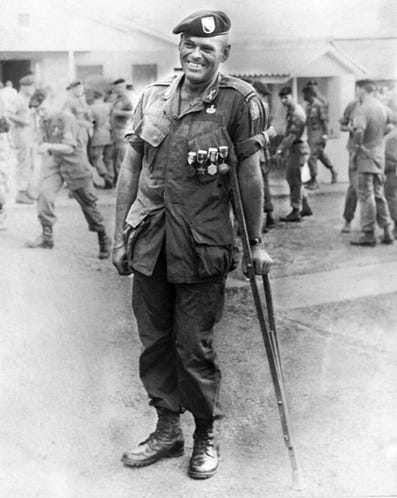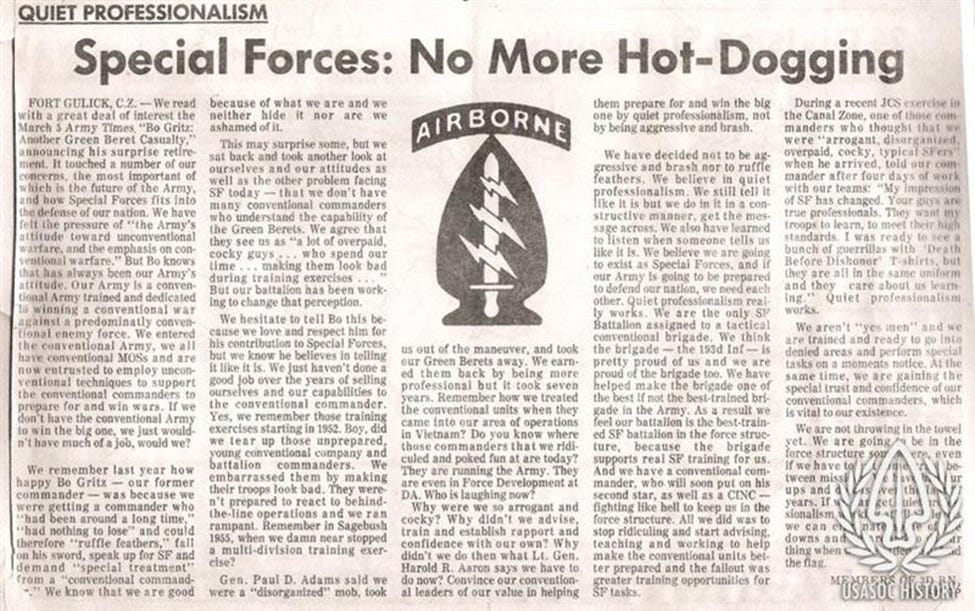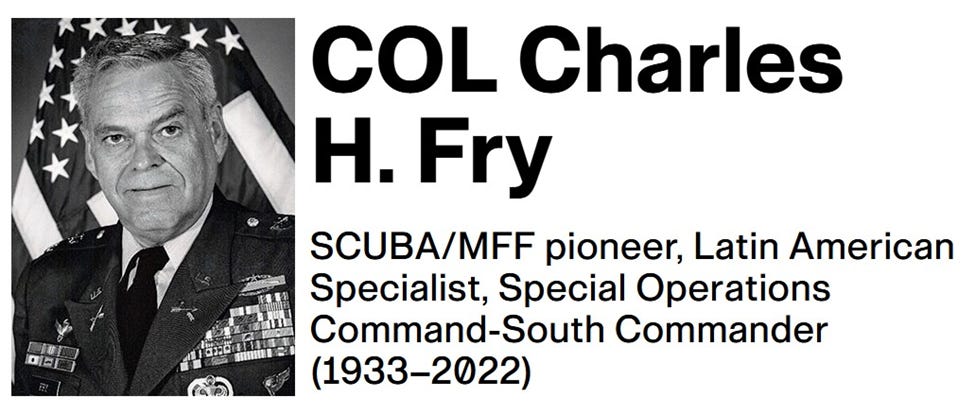Throwback Thursday
Brought to you by Special Warfare
“We [a Special Forces Battalion] were assigned…. to a conventional Infantry Brigade… so there was kind of a wall between the conventional and Special Forces. And, in order to do anything, one of the first things I had to do down there was… I had to break that wall.” – COL Charles Fry discussing his reasoning for publishing the article “Special Forces: No More Hot-Dogging.”1
History is a curious thing. Sometimes, in our drive to anticipate and prepare for the future, we overlook the invaluable lessons of the past. Some of those lessons were earned in blood. Others were instilled in us due to the impact of transformational leaders.
Within the Special Operations community, one such leader was COL Charles Fry, a pioneer and legend within Special Forces. COL Fry, as a Battalion Commander in 7th Special Forces Group, instilled a spirit of quiet professionalism into a generation of Green Berets when he penned the now-famous Army Times editorial, “Special Forces: No More Hot-Dogging.”
As the Army continues to adapt to the demands of future large-scale combat operations, the integration, interoperability, and interdependence between conventional forces and special operations forces (CF-SOF I3) remains critical to success. COL Fry’s 1979 editorial exemplifies the professionalism and trust required for this relationship while also serving as a timeless reminder of the values that bind us as professionals and teammates in service to the Army’s collective mission.
In 1967, after arrival at the II Corps Mike Force, 5th Special Forces Group, Captain Fry was awarded four medals earned earlier while with the 1st Cavalry Division in Vietnam. (Image credit: U.S. Army).
“No More Hot-Dogging”: A Call to Quiet Professionalism
Colonel Charles “Chuck” H. Fry enlisted in the U. S. Army in 1951, serving as a combat Infantryman in Korea before joining Special Forces in 1954. He became an early pioneer in underwater and HALO operations, as well as numerous other initiatives. After commissioning as an officer through OCS in 1960, he went on to serve as an Airborne and Pathfinder instructor and later commanded Infantry and Special Forces units in Vietnam. His Army career included extensive counterinsurgency advisory work in Latin America and culminated with his role as the Commander of Special Operations Command – South. Fry received the Bull Simons Award in 2009 and became a Distinguished Member of the Special Forces Regiment in 2013 for his lifetime contributions to special operations.
In 1978, when COL Fry assumed command of 3rd Battalion, 7th Special Forces Group (Airborne), he immediately became concerned with a growing divide between his unit and the conventional 193rd Infantry Brigade it was assigned to. Identifying the integration of SF and conventional forces as key to the Army’s collective success, COL Fry immediately moved to bridge the divide. He corrected the brash culture within his battalion and took the time to educate conventional commanders on the capabilities of Special Forces.2
The result was a resounding success, and the culture of “quiet professionalism” became synonymous with that of the Green Berets. This edition of Throwback Thursday underscores the importance of “quiet professionalism” as we collectively prepare for the battlefields of tomorrow. See COL Fry’s original article below:
For more information about the life and career of COL Fry, see the USASOC History page here. (Image credit: USASOC Command History Office)
Preserving History through the Harding Project
This Throwback Thursday reminds us of the importance of our history, highlighting the critical need for our Army’s professional journals to maintain up-to-date archives for posterity. Thankfully, the Harding Project is taking on this task through its partnership with the Army Software Factory. Such initiatives, focused on modernizing and preserving the branch journals, help ensure that our journals remain a focal point for continued discourse and the stewardship of our profession.
Revitalizing Special Warfare
So, how is Special Warfare being transformed and modernized? Some may recall that LTC Zach Griffith’s frustration with Special Warfare provided the impetus for the creation of the Harding Project. In response, we, as the Harding Fellows for the Special Operations Center of Excellence, have moved aggressively to revitalize the journal in recent months. Instead of Special Warfare’s historically infrequent and erratic publication schedule, the journal now publishes articles weekly on the Special Warfare Journal webpage. After publishing an article, we highlight it through enterprise email distros, as well as through a growing social media presence (Special Warfare Journal Instagram. We are also working to improve our archives and we look forward to collaborating with the Army Software Factory to enhance the searchability of historical issues!
While we are making progress, we will never be satisfied. For the journal to endure, we need to remain dynamic and relevant to the Special Operations and broader Army communities. We will continue to publish timely articles that are relevant to the Force. We hope you will join us over the next year as we continue this effort. With your contributions and engagement, we will help make our Army smarter, more efficient, and more lethal for the battlefields of tomorrow!
Major John Byrnes is a pseudonym for an active-duty Regular Army Soldier and Civil Affairs Officer with a background in Infantry and Special Operations. He is a graduate of the United States Military Academy and the National Defense University, and he currently serves as an editor for the Special Warfare Journal.
Chief Warrant Officer 4 William Bryant is a career Regular Army Soldier and Special Forces Officer (180A) with over 24 years of service. He is a graduate of the School of Advanced Military Studies and the Air Command and Staff College, and he currently serves as a Harding Fellow at the Special Operations Center of Excellence.
References
1. ARSOF History, COL Charles H. Fry, part 6, oral interview accessed 23 September 2025 from
2. U.S. Army Special Operations Command History Office, COL Charles H. Fry, accessed 23 September 2025 from https://arsof-history.org/icons/fry.html.







